Oil shale has often been overshadowed by traditional petroleum sources, but it’s gaining more attention as the world seeks alternative energy sources. This rock-like substance is a fascinating yet controversial resource. In this article, we’ll dive deep into what oil shale is, how it’s formed, its uses, economic importance, and its potential for the future.
Table of Contents
In a world rapidly moving toward alternative energy sources, oil shale remains one of the hidden and lesser-known treasures. This rock-like substance, rich in organic materials, could transform the future of global energy. But what are the challenges and opportunities of extracting it? Can oil shale answer the world’s energy crisis, or is it just a distant dream?
In this article, we comprehensively examine oil shale, its composition, extraction methods, and environmental impacts. Join us to learn about one of the 21st century’s most controversial energy resources.
What is Oil Shale?
Oil shale is a fine-grained sedimentary rock that contains significant amounts of kerogen, a precursor to oil. Unlike traditional oil, which is found in liquid form, oil shale needs to undergo a process to extract hydrocarbons. This rock is rich in organic materials. It is primarily made up of ancient plant and animal matter that has been compressed and heated over millions of years.
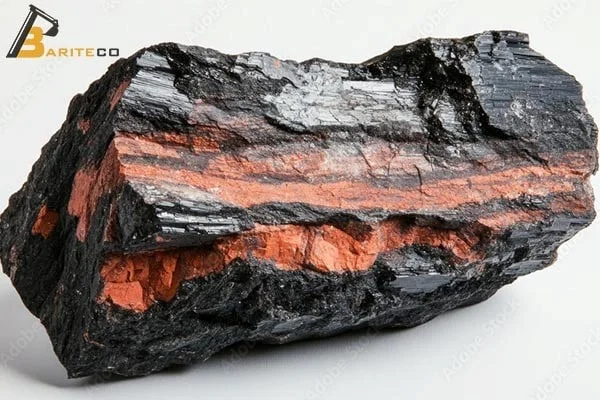
Oil shale can be found in large deposits across the world. Major reserves are located in the United States, China, and Estonia. When processed, oil shale can produce shale oil and shale gas. Both are used as alternative sources of energy. While it is not as widely used as conventional crude oil, oil shale offers potential for future energy production, especially as the demand for alternative energy sources increases.
In essence, oil shale is a valuable resource for oil and gas production, with its chemical composition and extraction processes making it a unique form of energy source in the global energy mix.
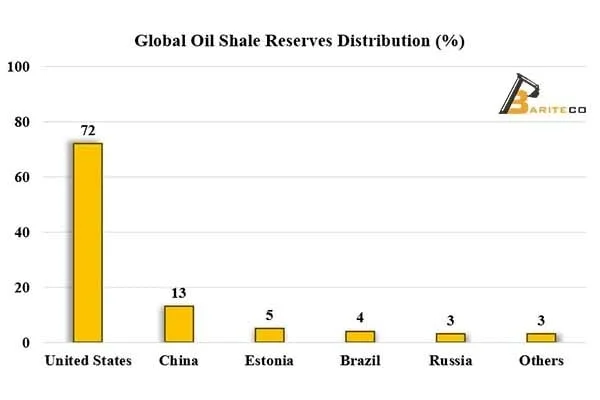
Composition of Oil Shale
The composition of oil shale is unique. It consists primarily of organic and inorganic materials. This combination determines its potential for energy production, particularly in the extraction of shale oil and gas. Oil shale is made up of kerogen, a complex mixture of organic compounds, and a variety of inorganic minerals. Understanding its composition is key to how oil shale can be processed to produce energy.
Organic Matter in Oil Shale
The organic matter in oil shale is mainly composed of kerogen, a solid, insoluble substance that is the precursor to oil. Kerogen is formed from the remains of ancient plants, algae, and other organic matter that were buried and subjected to heat and pressure over millions of years. This organic matter is rich in carbon and hydrogen, making it a potential source of energy once it undergoes thermal processing (retorting). The amount and type of kerogen in oil shale determine its quality and its ability to produce oil upon extraction
Inorganic Minerals in Oil Shale
In addition to organic material, oil shale contains various inorganic minerals that make up its solid structure. Common inorganic components include quartz, clay minerals, calcite, and feldspar. These minerals do not contribute directly to the production of oil but play a crucial role in the shale’s overall properties, such as its hardness and brittleness. The presence of these minerals can affect the efficiency of oil extraction methods and the overall quality of the shale for energy production.
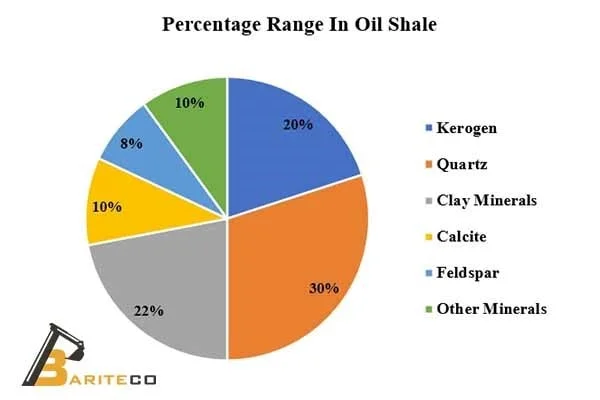
Formation of Oil Shale
Oil shale is a fine-grained sedimentary rock that contains significant amounts of kerogen, a solid mixture of organic compounds. When heated to high temperatures, kerogen can be converted into liquid hydrocarbons, which can then be refined into usable fuels like oil and natural gas.
Source of Oil Shale
Oil shale is formed over millions of years from the accumulation of organic matter. This includes algae, plankton, and other aquatic organisms in sedimentary environments like lakes, swamps, and shallow seas. Over time, these organic materials are buried under layers of sediment. The heat and pressure from the overlying rock transform them into kerogen.
The specific conditions required for the formation of oil shale, such as temperature, pressure, and the type of organic matter present, can vary depending on the location and geological history of the deposit. As a result, oil shale deposits can differ significantly in their quality and the amount of oil they can produce.
The specific conditions required for the formation of oil shale can vary depending on the location and geological history of the deposit. As a result, oil shale deposits can differ significantly in their quality and the amount of oil they can produce.
Oil shale is found in many countries around the world, including the United States, Estonia, China, Brazil, and Australia. However, the extraction and processing of oil shale can be challenging and expensive. It can also have significant environmental impacts.
Here are some additional details about the formation of oil shale:
Oil shale is found in many countries around the world, including the United States, Estonia, China, Brazil, and Australia. However, the extraction and processing of oil shale can be challenging and expensive, and it can also have significant environmental impacts.
Time: The formation of oil shale is a long process that can take millions of years.
Organic matter: The primary source of organic matter in oil shale is aquatic organisms, such as algae and plankton.
Sedimentary environment: Oil shale typically forms in sedimentary environments like lakes, swamps, and shallow seas.
Heat and pressure: Over time, the organic matter in oil shale is subjected to increasing heat and pressure, which transforms it into kerogen.
Kerogen: Kerogen is a solid mixture of organic compounds that can be converted into liquid hydrocarbons when heated.
Here are some additional details about the formation of oil shale:
Oil shale, while not as widely used as conventional oil, has a variety of applications. These are primarily focused on energy production. It serves as a potential source of liquid and gaseous fuels, lessening dependence on traditional fossil fuels.
- Time: The formation of oil shale is a long process that can take millions of years.
- Organic matter: The primary source of organic matter in oil shale is aquatic organisms, such as algae and plankton.
- Sedimentary environment: Oil shale typically forms in sedimentary environments like lakes, swamps, and shallow seas.
- Heat and pressure: Over time, the organic matter in oil shale is subjected to increasing heat and pressure, which transforms it into kerogen.
- Kerogen: Kerogen is a solid mixture of organic compounds that can be converted into liquid hydrocarbons when heated.
Uses of Oil Shale
Oil shale, while not as widely used as conventional oil, has a variety of applications, primarily focused on energy production. It serves as a potential source of liquid and gaseous fuels, lessening dependence on traditional fossil fuels.
Shale Oil Extraction
The primary use of oil shale is for the extraction of shale oil. This process involves heating the oil shale to high temperatures (typically between 450-550°C or 840-1020°F) in a process called pyrolysis. This breaks down the kerogen, the solid organic material within the shale, into a liquid called shale oil and gases. The shale oil can then be refined into various fuels, such as gasoline, diesel, and jet fuel, similar to how conventional crude oil is processed. There are various extraction methods, including:
- Retorting: This is the most common method, involving heating the shale in a vessel (retort) to extract the oil and gas.
- In-situ conversion: This method involves heating the shale underground and extracting the oil and gas directly, potentially reducing surface disturbance.
| Extraction Method | Process Description | Efficiency (%) | Energy Input Required | Environmental Impact | Commercial Status |
| Surface Retorting | Mining followed by heating in above-ground vessels | 85-95 | High | Significant land disturbance, high emissions | Operational in Estonia, China |
| In-Situ Conversion Process | Underground heating with wellbore extraction | 60-70 | Medium-High | Potential groundwater issues, lower surface impact | Pilot projects |
| Modified In-Situ | Limited mining with underground heating | 70-80 | Medium | Moderate land disturbance, controlled emissions | Experimental |
| Supercritical Water Processing | Extraction using supercritical water conditions | 75-85 | Medium-High | Lower emissions, higher water usage | Laboratory testing |
| Microwave Processing | Heating using microwave radiation | 65-75 | Medium | Potentially lower emissions, energy intensive | Experimental |
Extraction Methods Comparison
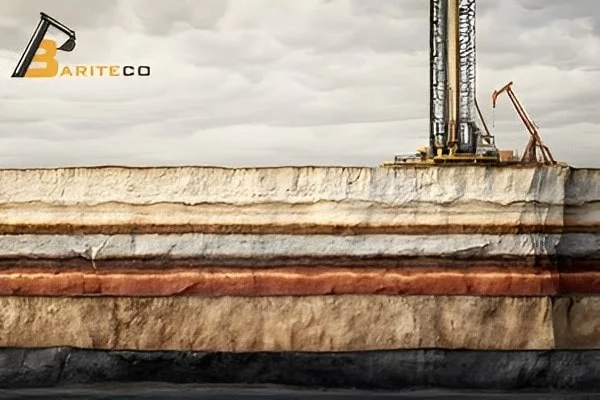
Shale Gas Production
In addition to oil, oil shale also produces significant amounts of natural gas during the pyrolysis process. This shale gas, primarily composed of methane, can be used for heating, electricity generation, and other applications. While often considered a byproduct of shale oil extraction, shale gas can also be a primary target, depending on the specific composition of the oil shale deposit. The gas is typically collected and processed to remove impurities before being used. Similar to shale oil extraction, in-situ methods are being explored for shale gas production, offering potential environmental benefits.
Economic Importance of Oil Shale
Oil shale holds significant economic potential, primarily as a substantial energy resource. While its development has faced challenges, it represents a possible pathway to increased energy independence and economic growth for nations with substantial deposits. The extraction and processing of oil shale can stimulate industrial activity, create new business opportunities, and generate significant revenue through domestic energy production. Additionally, investing in oil shale development can lead to advancements in extraction technologies, making the industry more efficient and cost-effective over time. Governments and private investors alike recognize its potential, leading to research initiatives aimed at optimizing resource utilization while mitigating associated risks. By leveraging these opportunities, oil shale could play a crucial role in shaping future energy markets and enhancing national energy security.
Oil Shale in Energy Production
In addition to oil, oil shale also produces significant amounts of natural gas during the pyrolysis process. This shale gas is primarily composed of methane. It can be used for heating, electricity generation, and other applications. While often considered a byproduct of shale oil extraction, shale gas can also be a primary target, depending on the specific composition of the oil shale deposit. The gas is typically collected and processed to remove impurities before being used. Similar to shale oil extraction, in-situ methods are being explored for shale gas production, offering potential environmental benefits.
The Environmental Impact of Oil Shale Extraction
Despite its potential economic benefits, oil shale extraction and processing carry significant environmental risks. These concerns are a major factor influencing the development and adoption of oil shale technologies. Key environmental impacts include:
- Greenhouse gas emissions: The extraction and processing of oil shale, particularly surface retorting, can release substantial amounts of greenhouse gases, contributing to climate change.
- Water consumption and pollution: Some extraction methods require large amounts of water, potentially depleting local water resources. Additionally, the process can generate wastewater containing pollutants that can contaminate surface and groundwater.
- Land disturbance: Surface mining of oil shale can drastically alter landscapes, destroying habitats and impacting biodiversity. In-situ methods, while potentially less disruptive on the surface, still carry risks of subsurface contamination.
- Air pollution: Processing oil shale can release air pollutants, such as particulate matter and volatile organic compounds, impacting air quality.
- Waste disposal: The extraction process generates large volumes of waste rock, which needs to be disposed of safely. This waste can contain hazardous materials that pose risks to the environment.
Addressing these environmental challenges is crucial for the sustainable development of oil shale resources. Research and development efforts are focused on improving extraction technologies to minimize these impacts, including carbon capture and storage, more efficient water management, and reduced land disturbance.
Future of Oil Shale
The future of oil shale remains a topic of debate, with its potential heavily dependent on technological advancements, economic factors, and, crucially, environmental considerations. While oil shale represents a vast resource, its widespread adoption faces significant hurdles.
Future Technology Development Timeline
| Time Period | Expected Technological Developments | Efficiency Improvements | Environmental Impact Reduction | Market Position |
| 2025-2027 | Advanced in-situ heating methods, improved retorting efficiency | 10-15% increase in extraction efficiency | 20% reduction in water usage, 15% reduction in emissions | Niche market, focused on countries with large deposits |
| 2028-2030 | Integration with carbon capture, microwave processing commercialization | 15-25% increase in energy efficiency | 30-40% reduction in carbon intensity, 25% reduced land impact | Growing complementary role to conventional sources |
| 2031-2035 | Hybrid renewable-shale energy systems, AI optimization of processing | 25-35% improvement in EROI | 50-60% carbon reduction with full CCS integration | Potential mainstream in energy-scarce regions |
| 2036-2040 | Circular economy integration, zero-waste processing systems | 35-45% increase over current efficiency | Near-neutral environmental footprint possible | Established alternative in diversified energy portfolios |
| Beyond 2040 | Possible transition to non-combustion uses (materials, chemicals) | Resource utilization approaching theoretical limits | Carbon-negative potential with advanced technologies | Evolution to specialized applications as energy transitions |
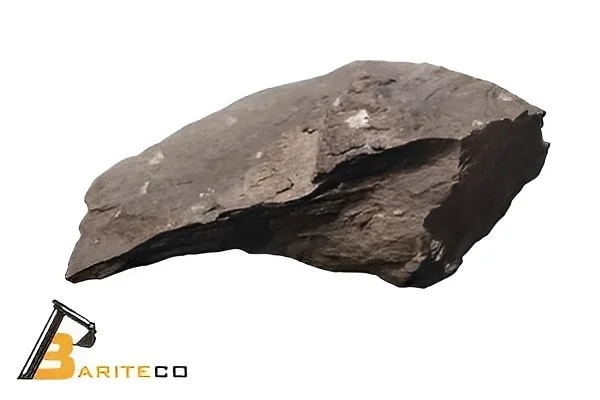
Several factors will shape the future of oil shale:
- Technological advancements: Continued research and development are crucial for making oil shale extraction more efficient, cost-effective, and environmentally sustainable. Improvements in in-situ conversion technologies, for example, could reduce the environmental footprint of oil shale production. Carbon capture and storage technologies will also play a critical role in mitigating greenhouse gas emissions.
- Economic viability: The economic viability of oil shale is closely tied to the price of conventional oil and gas. If oil prices remain high, oil shale becomes a more attractive alternative. However, the high capital costs associated with oil shale projects can be a barrier to entry. Government policies, such as subsidies or carbon pricing, can also influence the economic competitiveness of oil shale.
- Environmental regulations: Stringent environmental regulations can significantly impact the development of oil shale resources. Concerns about greenhouse gas emissions, water usage, and land disturbance will likely lead to stricter regulations, which could increase the cost of oil shale production. The future of oil shale will depend on finding a balance between energy needs and environmental protection.
- Climate change considerations: The long-term future of oil shale is also linked to global efforts to combat climate change. The transition to a low-carbon economy may limit the role of oil shale, especially if more sustainable energy sources become readily available and cost-competitive.
In the near term, oil shale is likely to play a niche role in energy production, primarily in countries with abundant resources and limited access to conventional fossil fuels. However, its wider adoption will depend on overcoming the technological, economic, and environmental challenges. The development of cleaner and more efficient extraction methods will be crucial for ensuring a sustainable future for oil shale. Ultimately, the future of oil shale will be determined by how well it can compete with other energy sources, both conventional and renewable, in terms of cost, environmental impact, and overall sustainability
Conclusion
Oil shale represents a significant global energy resource, offering potential energy independence for resource-rich nations. However, realizing this potential depends on overcoming key challenges. While promising, widespread adoption hinges on several factors. Technological advancements are crucial for developing efficient and environmentally sound extraction methods, like in-situ conversion with carbon capture. Economic viability is essential; oil shale must compete with other energy sources. Most importantly, environmental concerns greenhouse gas emissions, water use, and land disturbance require careful consideration and stringent regulations. Sustainable development is vital. Ultimately, oil shale’s future depends on balancing technological innovation, economic realities, and environmental responsibility. While unlikely to replace conventional oil entirely, it can contribute to a diversified energy portfolio, provided development prioritizes sustainability. Continued R&D for cleaner extraction technologies will be key to unlocking oil shale’s potential while minimizing its environmental impact.

FAQs
What is oil shale made of?
Oil shale is primarily composed of kerogen, which is a mixture of organic materials, and inorganic minerals like clay and quartz.
How is oil extracted from oil shale?
Oil is extracted from oil shale through a process called retorting, where the shale is heated to high temperatures, releasing oil and gas.
Where can oil shale be found?
Oil shale is found in various parts of the world, with the largest reserves located in the United States, China, and Estonia.
What are the environmental impacts of oil shale extraction?
The environmental impacts of oil shale extraction include water consumption, land disturbance, and air pollution, which must be managed responsibly.
Can oil shale replace conventional oil?
While oil shale has great potential, it is unlikely to completely replace conventional oil. However, it could serve as a supplemental energy source in the future.
Your thoughts on oil shale development matter to us. Please share your opinion in the comments section below.
